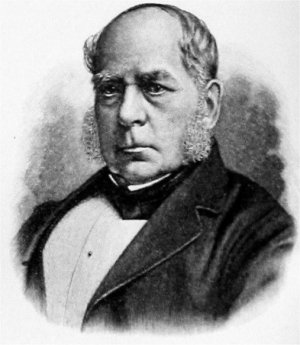The Bessemer process, devised by Henry Bessemer - a London-born inventor who happened to work in a mint in Paris, before fleeing as the Revolution and the subsequent Terror ravaged la cité - solved a big deal of military problems by devising an efficient way to manufacture steel, in great quantities and in a short time.
 |
| Henry Bessemer: such a jolly good fella ! |
The idea, which probably won't make much sense at a first read, was to simply blow air through molten, dirty iron ore (high phosphorus, silicon, manganese, carbon), in order to get rid of most impurities by oxidizing them. A lot of molten ore. And a lot of molten air. How do you call that ? In a single word, Pyrotechnics
So, he used the excuse of making killing people more economic for Great Britain to invent the most spectacular process in metallurgic industry to his (and possibly our) day. And, incidentally, earn shitloads of money.
So far, so good. But let's tackle the devil: where do you get the ore ? How do you melt it ? How do you blow air through ?
First of all, the raw material for the Bessemer process is pig iron, which is obtained by smelting iron ore. Ok, what does this even mean ?
 |
| Iron Pig |
 |
| Yeah, this iron ore has a lot of iron. |
To do this, you need to melt the ore in a furnace.
First of all, a few impurities will get oxidized and fly away, namely carbon and sulphur.
However, the high temperature means that your molten iron will also oxidize like hell, and to fix this you have to introduce some reducing agent, which will efficiently suck oxygen from the iron; the standard way to do this is use carbon, or charcoal, which will produce first carbon monoxide, then dioxide, thus allowing iron to stay classy.
The other problem one has to tackle is the presence of impurities, which will be removed by using an appropriate flux, usually limestone, which absorbs phosphates, and reacts with carbon and sulphur dioxide, thus forming a slag which stays separated from pure iron, while at the same time impeding oxidization of the latter.
The molten iron at this point is not by any means 100% pure; a particular type of furnace, the blast furnace, produces pig iron, in which the carbon content is still relatively high (3.5-4.5%).
.jpg) |
| Bessemer Converter |
What's happening ? Well air is pushing through, and silicon, manganese, carbon are oxidized, either escaping spectacularly as gas, or condensing as dull slag.
The huge flames tell a lot about the current state of the purification process, and they are the main indicator as to the right moment to stop the process.
The molten remains are finally moved to moulds, where slag, being less dense, will float to the top, allowing for an easy removal.
What lies below, then, is iron with the (hopefully) right amount of carbon, a.k.a. steel.
Time to build some serious gun !
Anyway, the Bessemer process has now been superseded by better alternatives, so all you just read is obsolete.
Kisses and hugs !
Also, for a nice, Brit narrated history: http://www.youtube.com/watch?v=qJ3aTpKMmfQ
Also, how does Iron work ?

No comments:
Post a Comment